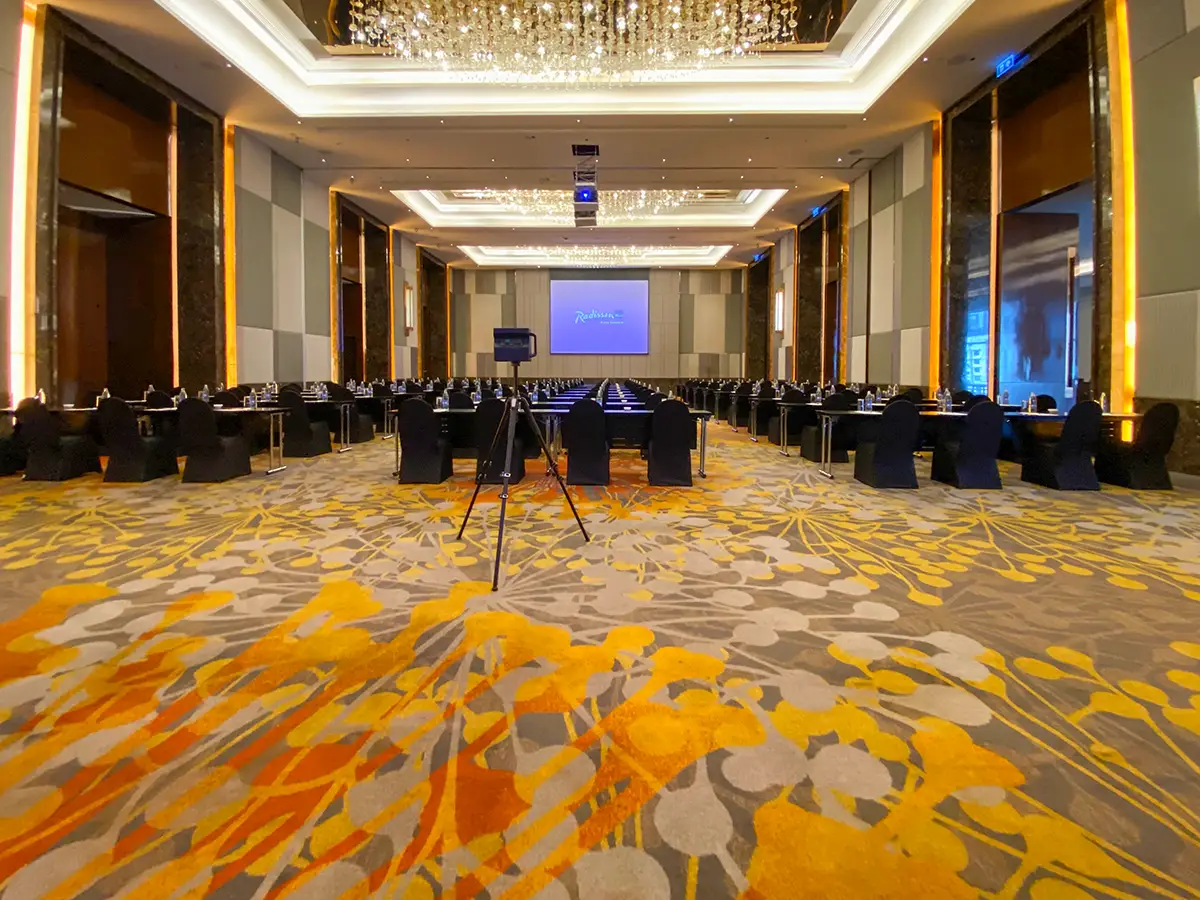Event venue management involves coordinating complex spatial and logistical details. Traditional tools like photographs and 2D floor plans often fail to convey the complete context of a space, leading to inefficiencies for both venue managers and event planners. A 3D digital twin offers a practical solution to these challenges.
This guide provides a matter-of-fact overview of how this technology can be applied across the core business functions of an event venue.

Application 1: Marketing and Sales
A 3D tour functions as a 24/7 virtual site inspection tool. This allows prospective clients, particularly those who are remote or international, to conduct a detailed walkthrough of the facility at their convenience. This approach provides several benefits for the sales process:
- Pre-Qualified Leads: A virtual tour allows prospects to determine if the space fits their basic requirements before scheduling a physical visit, ensuring that sales team time is spent on high-intent leads.
- Build Trust Through Transparency: An immersive, unedited view of the space provides objective information about the venue's condition, layout, and sightlines, building credibility with potential clients.
- Showcase Versatility: Using interactive tags, a single tour can showcase photos or videos of the same space configured for different events (e.g., a wedding setup vs. a corporate conference), demonstrating its flexibility.
Application 2: Event Planning and Coordination
Once a client has booked the venue, the digital twin transitions from a sales tool to a practical planning asset. It serves as a single source of truth for all stakeholders:
- Accurate Measurements: Event planners can use the built-in measurement tool to confirm dimensions for staging, seating arrangements, vendor equipment, and decor, eliminating guesswork and reducing on-site errors.
- Vendor Coordination: The tour can be shared with third-party vendors (florists, AV technicians, caterers) so they can understand the space, plan their setup, and identify logistical needs like power outlets or access points in advance.
- Client Collaboration: The venue manager and client can conduct virtual walkthroughs together to finalize layouts and discuss details, ensuring everyone is aligned.
Application 3: Operations and Management
The digital twin also has significant internal value for the venue's operational team:
- Staff Training: New staff can use the tour to quickly learn venue layouts, including service corridors, storage areas, and emergency exits, before their first event.
- Asset Management: The model can be used to document the location and condition of venue assets, from furniture to AV equipment, for inventory and maintenance purposes.
- Post-Event Review: After an event, the digital twin can be used in post-mortem meetings to review what worked well and what could be improved for future layouts.
Conclusion
A 3D digital twin is a multi-purpose asset for an event venue. It functions as a marketing tool to attract and convert leads, a collaborative tool to streamline the planning process, and an operational tool to improve internal workflows. It provides a data-rich, visual foundation for managing a modern event space more efficiently.